Chapter
3: The Iron Horse

Of all of man's
inventions, none seems so iconic, recognizable and endearing as the
steam locomotive. For nearly eighty years its haunting whistle in
the prairie landscape seemed as natural and comforting as bird song.
At the
turn of
the century when horse or ox cart were the norm, there was something
special about locomotives: the look, the sound and power. They
just seemed to immediately belong on the open prairie.
People
marveled
at the speed. While oxcart travel was slower than walking, these Iron
horses rocketed down their rails at 40 – 60 kilometres an hour.
It was a stunning leap in transportation technology. In fact, there
were those who feared it to be an act against God and nature.
It
fostered the
coming population boom on the prairies.
Steam
locomotives
were first developed in Great Britain during the early 19th century.
The invention and widespread use of train travel facilitated the
industrial revolution and transformed both the economy and lifestyle of
the era.
Designs
improved,
and the technology quickly spread to the United States where it was
responsible for the amazing speed by which they accomplished their
continent-wide expansion.
There is
perhaps
a little irony in the fact in Manitoba our first CPR steam arrived here
not on rails, but as a passenger on its predecessor … the steamboat!
In 1877,
CPR
Contractor Joseph Whitehead purchased an engine, had it loaded on a
barge towed by the SS Selkirk,
On
October 9 the
steamer continued the historic journey towards Winnipeg. It was a gala
affair, with hundreds of settlers lining the riverbanks.
It was
the first
locomotive to arrive in the Canadian west.

The Countess in
the Railway Museum
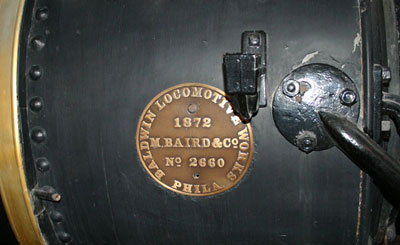
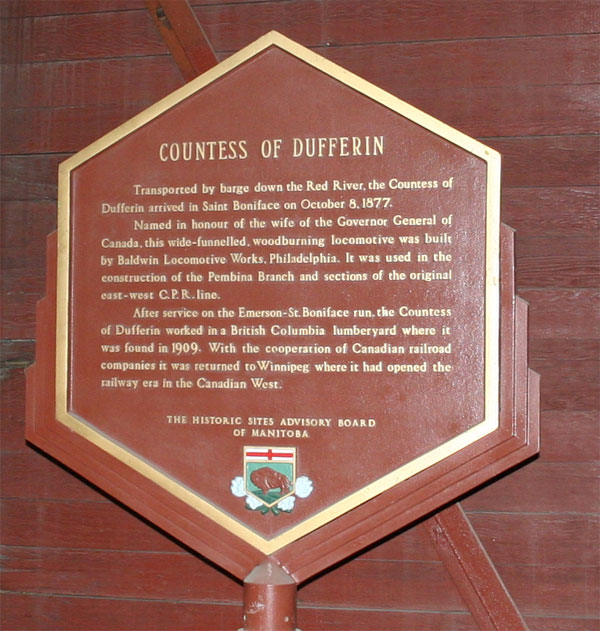
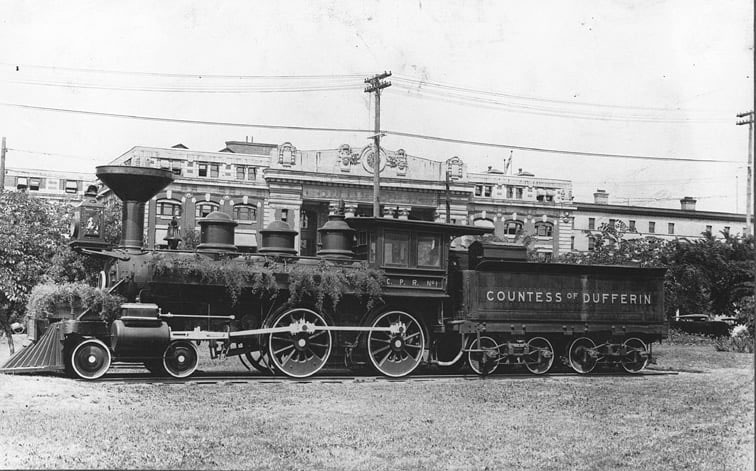
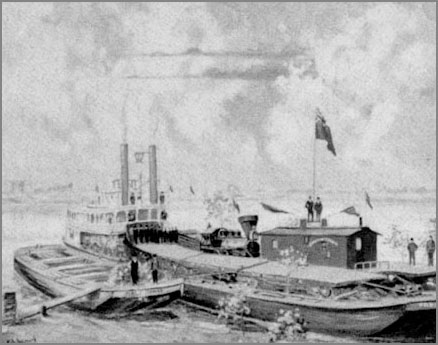
Photo – Archives
of Manitoba
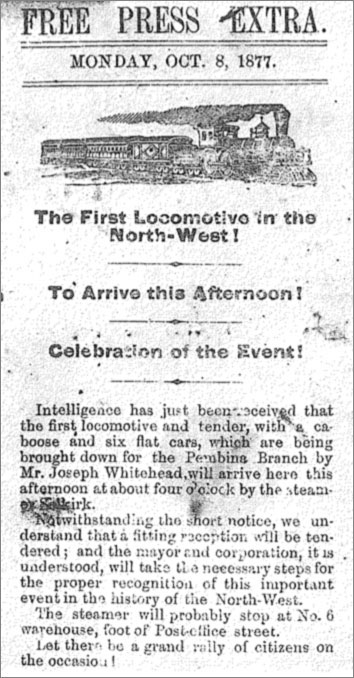
Winnipeg Free
Press Oct. 8, 1877
The welcome at
Winnipeg was vociferous and filled with excitement, as reported, in
part, by the Manitoba Free Press on October 9, 1877:
“The locomotive
was unloaded from the barge at St. Boniface on October 10 with much
fanfare and was put to work the following day.”
She was only the
first of hundreds of locomotives that would come to the prairie in
future years and the only one to arrive by boat.
The Countess of
Dufferin is one of the few remaining steam locomotives from this era
remaining in Manitoba. Its place of honor today is the Winnipeg Rail
Museum.
The earliest
Canadian locomotives burned wood. They had the distinctive funnel
stacks to allow the ash to cool so as to eliminate fires on the dry
open grasses of the prairies.
The necessary
wood was stocked at the side of the rail at specific intervals.
In the early days
the passengers had to help load the wood into the tender so they could
carry on down the track. For this they received a few pennies off their
next trip. Eventually coal was found to be available and more efficient
without the need to retrofit the engines fireboxes.
Steam locomotives
of the era had several common traits. The tender, linked behind the
engine stored both the necessary water for the steam and coal for the
firebox. The firebox was surrounded by a long round boiler in
which created steam. The steam was transferred by hoses to a
reciprocating pistons on both the sides of the largest wheels called
"drivers". These drivers transfer the steam power from the
pistons to the push rod to wheels onto the track.
There were many
variation of brands and styles over the years, but the basic, simple
and efficient design of the steam locomotive for the most part
didn't change for nearly 150 years.
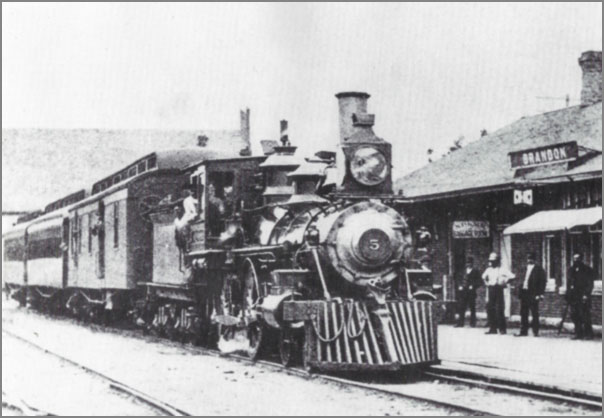
The Northern
Pacific / Manitoba’s #5 was photographed at the 6th street Brandon
Station around 1905.
https://www.museumsmanitoba.com/150/details.php?oid=2008171-01
|


